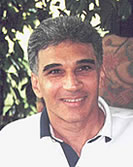Are you having trouble getting ready for your opponent's return after serving? If you do get ready, are you having trouble deciding what shot to hit? Should it be a slice, topspin, or flat stroke? In this lesson I will answer both of these questions in two parts.
PART ONE - GETTING READY
The first plan of action would be to practice hitting your serve without standing there watching to see if it has gone in! Instead, you should prepare for the return. This sounds simple but there are two inherent problems that plague most players when recovering after the serve.
One, they wait to see if their serve is in before getting ready for the return. It does not matter whether your serve is in or out, you should prepare for a return either way. And two, most players do not practice the balance to recover properly after a serve.
1. WATCHING YOUR SERVE
This problem is the downfall of many players in their match points. They are so busy watching their last shot, they do not get ready and prepare for the return. As a result they are slow to react to the opponent's ball coming back at them. It does not take a genius to figure out that if you prepare quickly after your shot, you will have more time to hit your opponent's return. I think the phrase, "he who hesitates is lost," sums it up quite well! You must practice hitting your serve and not waiting to see if it lands in or not. Instead, begin your preparation for a possible return. Notice I said "possible return," whether there is a return or not is irrelevant... you prepare anyway! Doing this will keep you alert and ready to move faster in whichever direction the return comes.
* Many, many points are lost because players are NOT PREPARED to make quick adjustments (mentally or physically) to retrieve shots after they have served. They have fallen into the trap of watching the magnificence of their own glorious shot and not thinking about the possible return.
2. PRACTICING A BALANCED RECOVERY
Next you must practice your balance over and over and over again by serving and bouncing back to ready position about a foot behind the baseline (unless of course you are serving and volleying).
A word of caution! Just because you can execute this move does not mean you're totally balanced yet. There is a smooth rhythmic feel to the movement that takes practice. In addition, this move has to be subconscious enough so that you can concentrate on your opponent's return while you are recovering.
Tying both techniques together you would serve and IMMEDIATELY (not waiting to see if your serve is in or not) BOUNCE BACK on balance to prepare for the return. This is all done automatically and instinctively without hesitation! A little practice in these two areas and you will be surprised how focused you become on your opponent's return of serve and how quickly you begin reacting to that return.
As I have said before, learning tennis is doing simple things over and over and over again until it is committed to the subconscious. Then the magic begins!
PART TWO - WHAT SHOT SHOULD YOU HIT?
You own a slice, a flat, or a topspin shot off both the forehand and backhand groundstokes. Now, which shot should you select after your opponent returns your serve? The answer to this question is not black or white, but depends on many factors:
- Are you in trouble?
- Are you tired?
- Does your opponent have difficulty with topspin or slice shots?
- Are you trying to pass your opponent at the net?
- Do you want to rush your opponent by hitting the ball with speed?
- Do you want to dip the ball at their feet?
There are many different situations that dictate which shot you hit. In some of my matches I have even hit shots without knowing why I did it that way... it just felt right at the moment! I told you this game must be learned on a subconscious level!
Here are a couple of general guidelines that can help you make your decisions.
If you are on the defensive after your opponent returns your serve, a slice can keep you in the point. Why? The slice offers a slower more controlled shot and can be hit easier if you are in trouble and the ball gets behind you.
If you are not on the defensive and can get a good crack at the ball, use your drive or topspin. In fact, if you have good flat or topspin shots you must use them more often than a slice in a match. Your drive and topspin are weapons you must use in any opportunity to keep your opponent on the defensive. The slice has backspin which is naturally a slower shot that exerts less effort. So reserve the slice for the defensive, for taking a rest, for approach shots, or for slowing down the game.
If you only possess a slice shot, obviously you are stuck slicing the ball. But if you wish to use the slice as an offensive weapon you can move the ball away from your opponent, keeping him or her on the run.
Be flexible and adjust your game with the shots you possess at the moment. Champions do this all the time... why shouldn't you?
SUMMARY
After you serve, stay balanced and IMMEDIATELY recover for the return, then pick a shot that the SITUATION dictates and play ball!


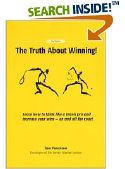
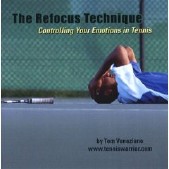
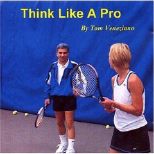
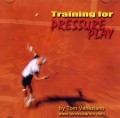



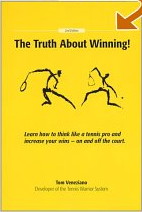
 You will join 13,000 other subscribers in receiving news of updates to the Tennis Server along with monthly tennis tips from tennis pro Tom Veneziano.
You will join 13,000 other subscribers in receiving news of updates to the Tennis Server along with monthly tennis tips from tennis pro Tom Veneziano. 